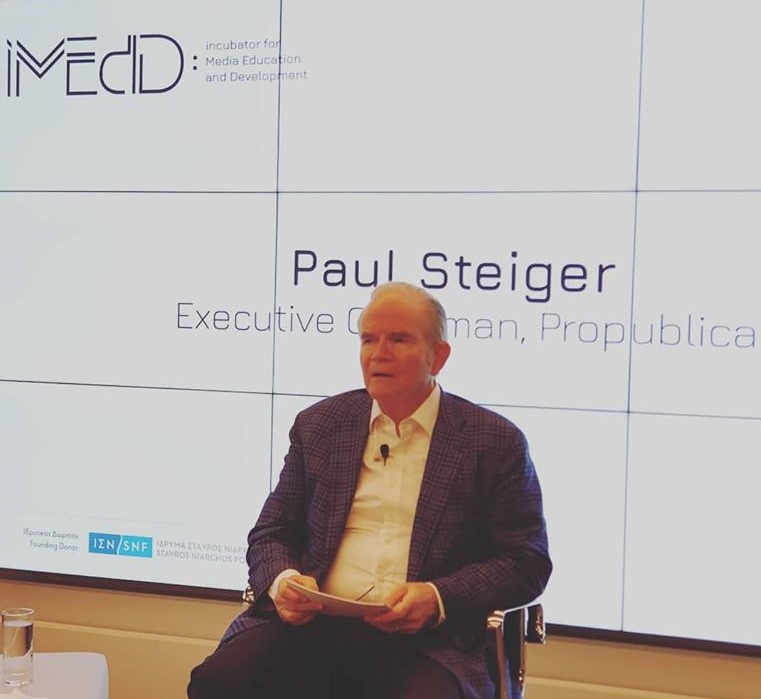Paul Steiger, Executive Director, ProPublica came to Athens invited by iMEdD and discussed new sustainability models for news organizations, the future of journalism and of course the success story of ProPublica.
He started by referring to the traditional model of print journalism that has changed globally and in the US, where many historical newspapers have closed. Additionally, titles like The Times, Post, WSJ, and many more that had been successful, have turned to the Internet.
In parallel, new efforts like Daily Beast and Politico as well as traditional outlets, like Washington Post have adopted new models and have gone heavily in the direction of depending on their readers. Politico, for example, offers its main content for free but has created Politico Pro, narrowly focused specialized online newsletters that are offered to readers on a premium subscription basis.
He also referred to non profit organizations for investigative journalism that have changed journalism in the US and of course ProPublica. The Center of Investigative Reporting, The Center of Public Integrity and Texas Tribune are some more examples of this sustainability model that is based on donations.
As Paul Steiger pointed out, a financial model can be sustainable without being profitable. Large private universities like Harvard or Stanford, large museums, philanthropic hospitals, public radio and public TV are some examples. Almost none of these institutions is profitable.
ProPublica has increasing donations, from $10 million per year from a few donors to $30 million per year from 25.000 or more donors. Today, it has 125 employees and is trying to induce change of behavior by giving the public information that they find useful. It is an indication what theris peers think about their work and, hence, they have been nominated for 11 Pulitzer awards and have received 5 of them.
